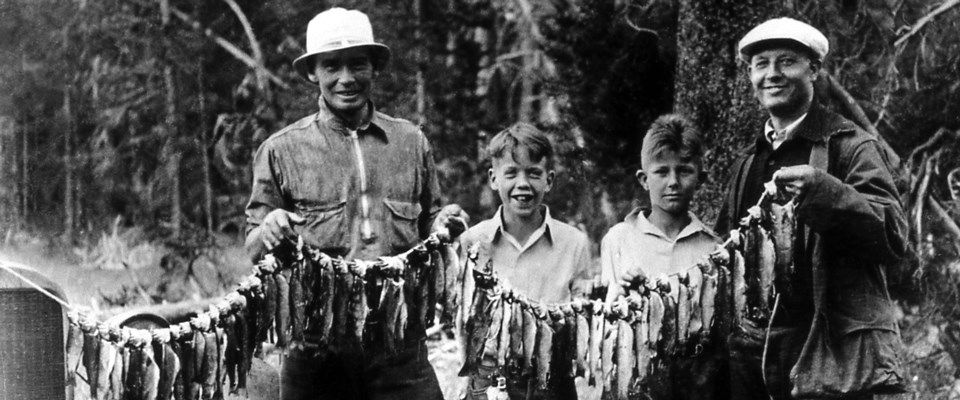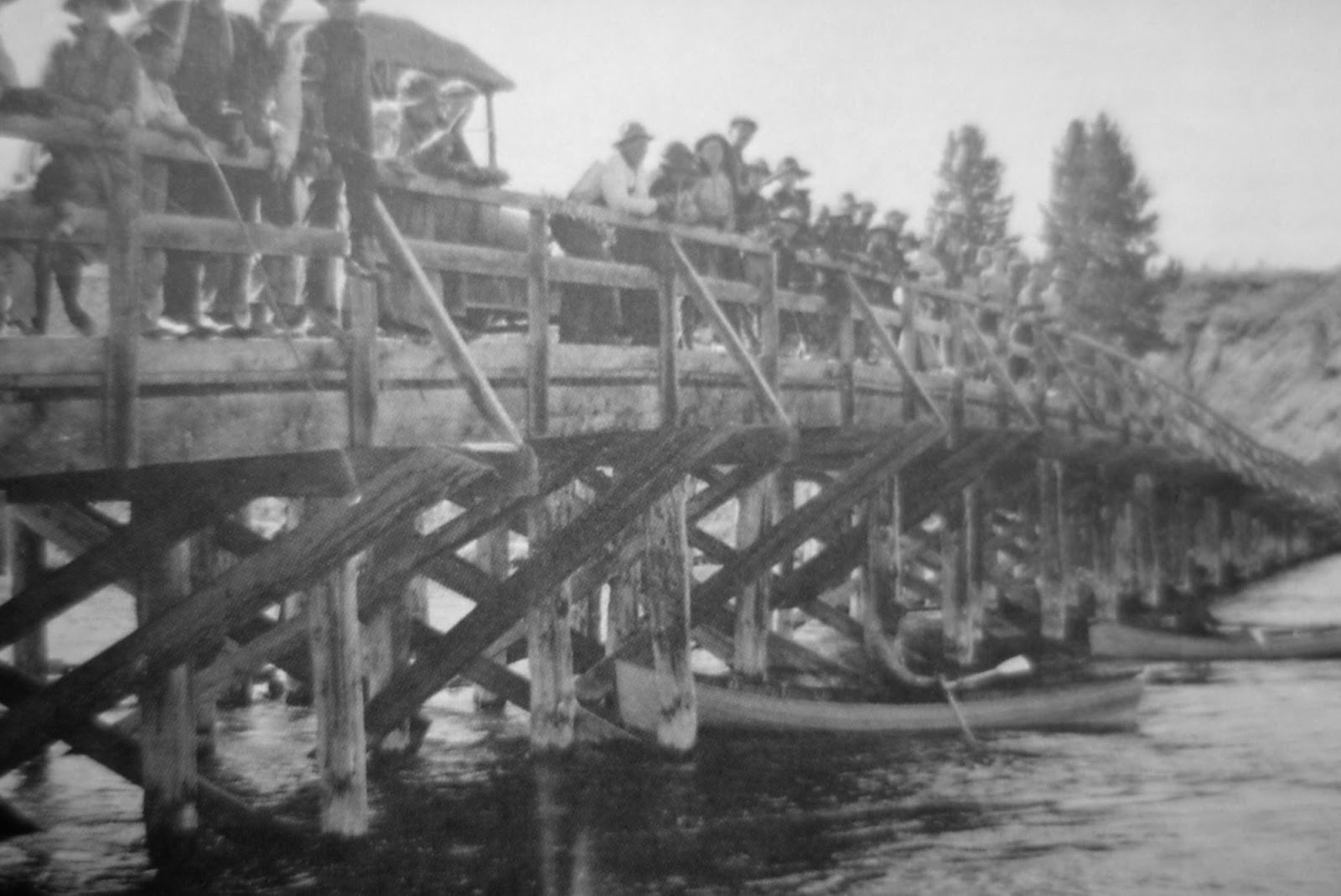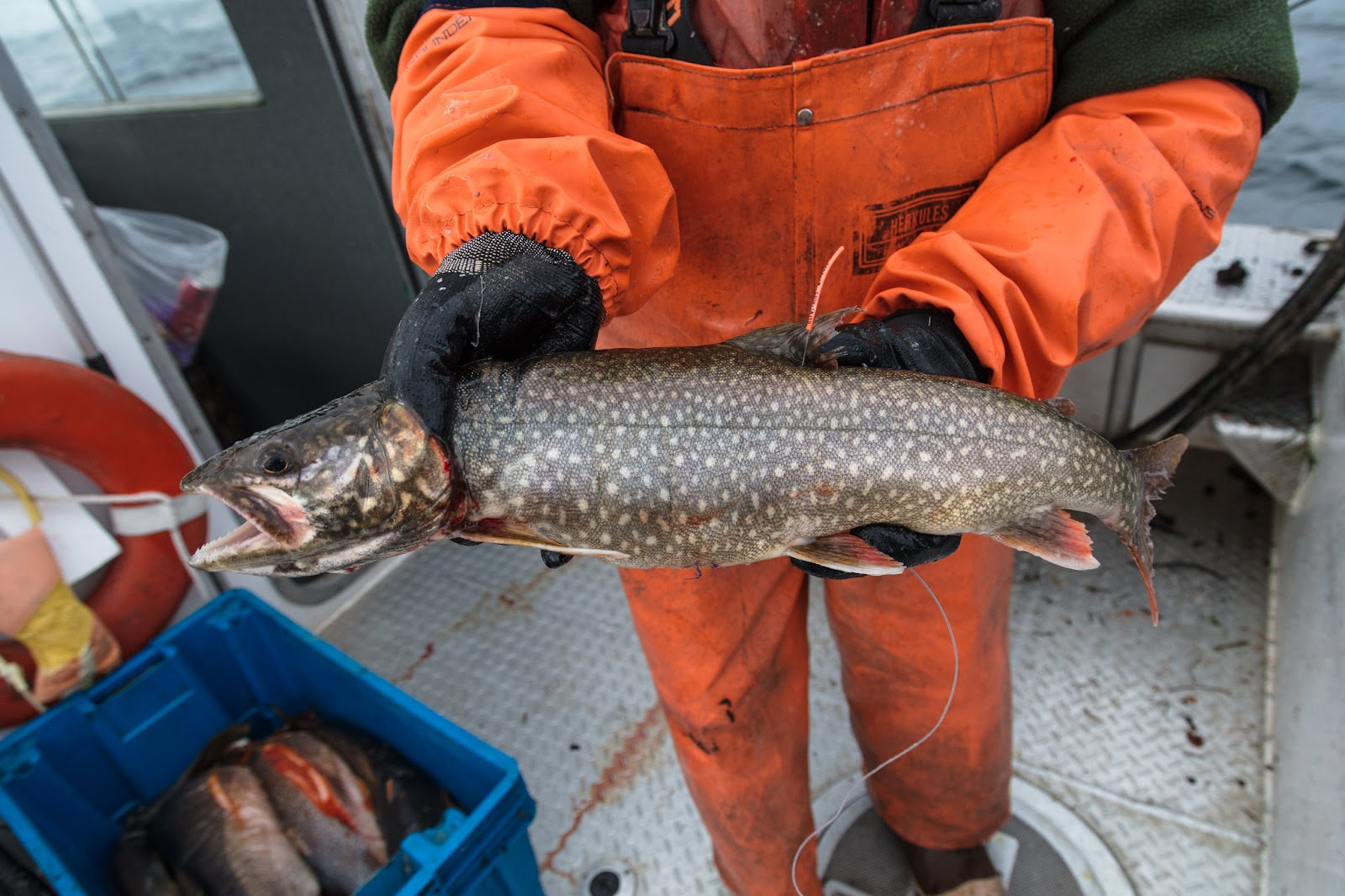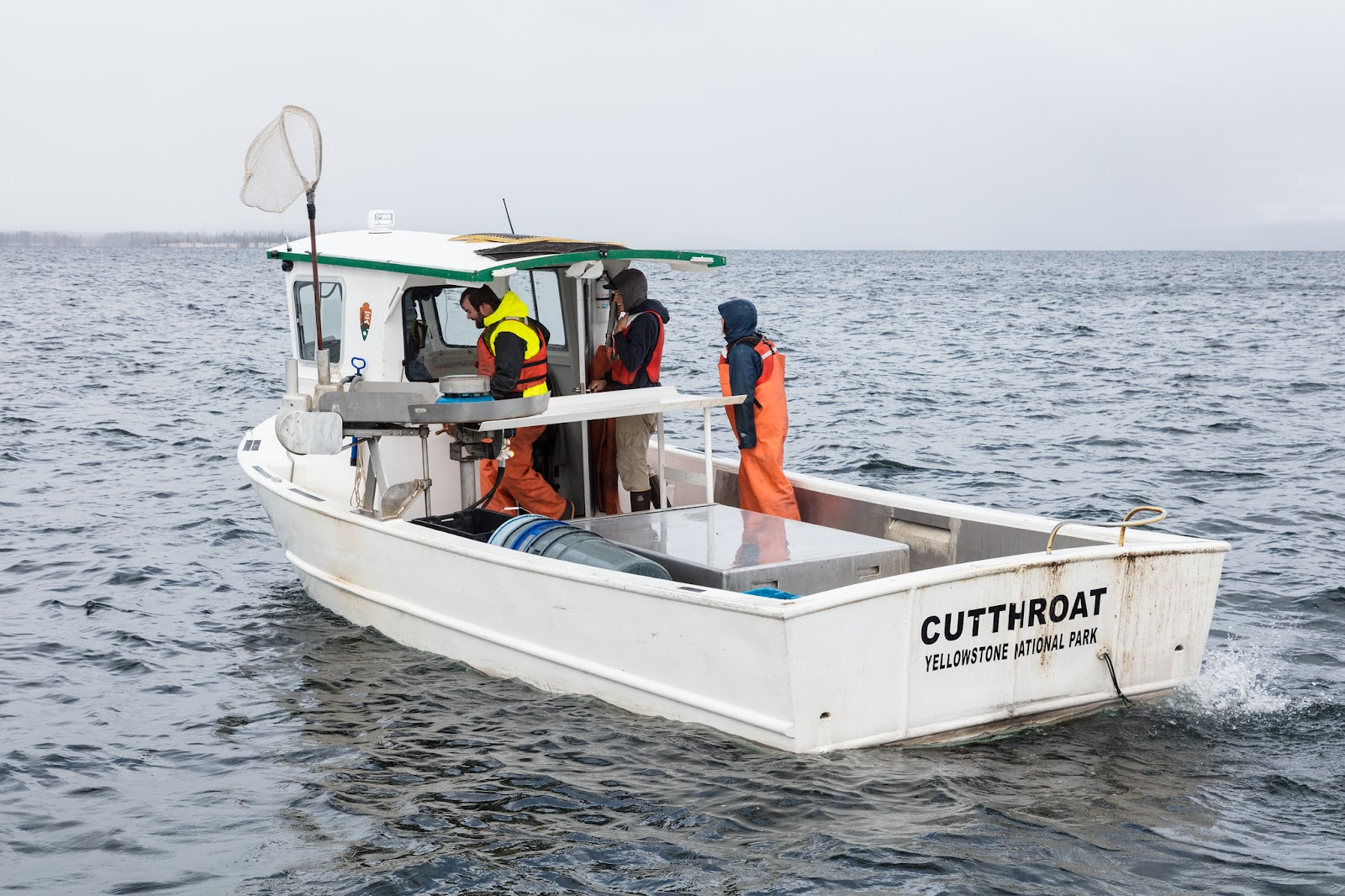Yellowstone National Park is a bucket-list fishing experience for any angler because of its pristine natural surroundings, thousands of miles of meandering waters and for the opportunity to catch native cutthroat trout in the nation’s first national park.
Yellowstone River and Yellowstone Lake have the largest population of cutthroat trout in inland waters in the world, but their populations have been decimated by non-native species that threaten to topple the entire ecosystem that depends on them.
“When I first got here in 1980, the cutthroat were so plentiful it seemed impossible not to catch a fish. In fact, the rules then were that you could only keep fish under 13 inches. It was even harder to find fish small enough to keep,” said Rick Hoeninghausen, an avid angler who has witnessed first-hand the population changes for native cutthroat trout in Yellowstone Lake through the decades.
The native cutthroat trout are as fundamental to the natural environment in and around Yellowstone as the other precious biological and ecological systems, but the species has faced a serious threat from non-native lake trout for the last century.
The trickle-down effect threatens to collapse the entire ecosystem in Yellowstone. The colorful native trout inhabit Yellowstone’s cold-water tributaries providing an important base for the aquatic food web. They are also an important food source for land-based animals including 16 species of birds like osprey and mammals like bears, mink and river otters.
The clock is ticking to preserve this critical species in the heart of one of the most treasured natural environments in the United States.

Yellowstone’s Lake Fish Hatchery in the early 1900s. Photo provided by National Park Service
Growing a fishery: from concept to execution
To understand how Yellowstone got to the breaking point with its native cutthroat trout populations it is important to look back at the origins of what has become a delicate balance between the area’s natural landscape and visitor’s ability to enjoy it without destruction.
“When the park was first established [in 1872] about half the waters in Yellowstone naturally did not harbor fish because of waterfalls and so on that prevented their colonization after the last glaciation,” said Todd Koel, leader of the Yellowstone National Park Native Fish Conservation Program.
The fish that did exist in the waters were caught and used as food sources for wildlife and for the people who lived there. Once word spread about the quality of fish in some of Yellowstone’s remote waters, the idea of recreational fishing was introduced, and park managers wanted to find a way to offer enough angling opportunities to the visitors coming to fish.
A fish hatchery was established to produce trout for stocking and by 1881 park managers began introducing native cutthroat to some of Yellowstone’s fishless waters.
Non-native species were also introduced into park waters including brook trout, rainbow trout and brown trout.
“Managers looked to stock fish to improve fishing and food for park visitors and people who lived in the park. They were good at moving the fish in milk cans and stocking them all across the park,” said Koel. “A lot of the fish they stocked came from outside the park and that’s the problem we are dealing with now.”
The National Park Service estimates that more than 300 million non-native fish were introduced into Yellowstone and among the species introduced from outside the park is today’s enemy number one—the non-native lake trout.
The lake trout were brought to Yellowstone from Lake Michigan and intentionally stocked into the Lewis and Shoshone Lakes of the upper Snake River in 1890. The popularity of Yellowstone’s recreational fishing catapulted and evolved the park into a prominent angling destination.

Yellowstone’s Fishing Bridge. Photo provided by National Park Service
Journey to the breaking point
Though there were short-term gains to attract anglers to Yellowstone for sportfishing, the concept only worked in theory. By 1930 the destructive results of introducing non-native fish species were noticeable and the hatchery operations discontinued by 1959.
According to the National Park Service’s historical literature on the Lake Fish Hatchery, “recreational interest took precedence over protection of the park’s natural ecology.” But by the time anyone took notice of the negative impact on native species of cutthroat, a trajectory was set in motion for the next century that would be nearly impossible to reverse. The lake trout migrated into Yellowstone Lake by 1994 and opened an entirely new chapter that would threaten not only the native cutthroat but the larger Yellowstone ecosystem.
Just how the lake trout got into inland Yellowstone Lake has puzzled researchers for years. The fish would have to cross the continental divide from the Snake River, so no one really knows how they got there.
“It doesn’t really matter [how they got there] because they are harmful to the native cutthroat trout in the lake,” said Koel. “If we allowed the cutthroat to disappear and allow the lake trout to thrive within the lake, all the animals that depend on the cutthroat trout would also be displaced or gone.”

Radio tracked lake trout. Photo provided by National Park Service
Lake trout are highly predatory, live deep within the lake making them inaccessible to potential predators, spawn within the lake, have a 30- to 40-year lifespan (compared to a cutthroat’s 10 to 12 years) and produce thousands of eggs. Each female lake trout can produce up to 10,000 eggs or more. About a third of the lake trout’s diet is cutthroat trout of which a mature fish can eat up to 41 cutthroat trout in a year.
These factors presented by the lake trout make a nearly impossible habitat for the cutthroat to survive and subject them to threats they never had before.
“These cutthroat trout of Yellowstone Lake were the sole trout of Yellowstone Lake, and they evolved there over thousands of years without any other large fish in the lake. There were no lake predators on these cutthroat trout, so they are fairly naive to being preyed upon by other fish within the lake,” said Koel. With decades of scientific evidence eventually backing the observations of declining cutthroat trout populations, the National Park Service had to pivot priorities in order to protect one of Yellowstone’s most precious natural resources at the heart of its ecological system.

Fish crew members on the Cutthroat surveying for lake trout. Photo provided by National Park Service
Protecting Yellowstone’s most precious aquatic species
Today the park’s management is aggressively working to reverse the damage already done and to reduce the long-term extinction risk to the park’s native cutthroat trout species. It is a last-ditch effort to fight what for many years was a losing battle.
The National Park Service is doing this through the Yellowstone National Park Native Fish Conservation Program that has two main goals: to suppress the lake trout and to enable the cutthroat to rebound while reestablishing populations on their own naturally.
The lake trout suppression efforts are ongoing with an estimated 300,000 lake trout removed every year and 4.4 million lake trout removed from Yellowstone Lake in the last 27 years of the program’s existence between 1995 and 2022. The lake trout suppression program and native fish conservation program on Yellowstone Lake is the largest and longest running non-native fish suppression program in the world.
But they’re not doing it alone. The funding for the Yellowstone National Park Native Fish Conservation Program comes from private funding from Yellowstone Forever, the official nonprofit partner of Yellowstone National Park.
“I know that if we had not started funding this project 27 years ago Yellowstone would be a very different place,” said Lisa Diekmann, CEO of Yellowstone Forever.
The organization funds many projects throughout Yellowstone from educational and philanthropic efforts to field seminars and initiatives that protect the park’s ecosystems. The cutthroat trout conservation program, funded by public-private partnerships that raise more than a million dollars a year, is one of its highest priorities.
“Yellowstone is a place worth protecting and preserving and it doesn't happen without the park staff who are working there and the work that we do has an impact that will last for generations,” said Diekmann. “The funding that our donors have provided have helped the park get the resources that they needed to figure it out.”

Pat Bigelow, fisheries biologist netting Yellowstone cutthroat trout. Photo provided by National Park Service
Tactics to combat non-native species
Though the National Park Service has employed several types of resources over the years for its lake trout suppression program, gillnetting is the most productive. It involves a fleet of boats regularly deployed onto Yellowstone Lake to collect adult lake trout from depths of 180 feet. Some lake trout are tagged and released so teams can track them and know where they need to target the next time. The rest are killed. Other removal methods include embryo suppression and telemetry for data collection.
Fishing restrictions that are in place also help balance the number of entities competing for the park’s natural resources. Some of these include seasonal fishing dates, catch and release for native fish and the mandatory harvest of non-native species, meaning that anglers must take or kill any lake trout that they catch.
With these combined efforts in place for nearly three decades, progress is finally being made to turn around the cutthroat population numbers.
The lowest cutthroat trout populations ever recorded were in 2009 and 2010 before the numbers started taking a positive turn. The National Park Service reports that predatory lake trout, considered age six and older, have now been reduced from about 53,400 fish in 2012 to just 4,000 in 2022.
“That’s a 92% decline in the adult segment of population which are the predatory fish on our cutthroat trout, and they are also the ones that are producing the young lake trout and sustaining the population,” said Koel.
Anglers are once again catching cutthroat in Yellowstone Lake after years of noticeable declines.
“Prior to the NPS work to restore native cutthroat trout, it became obvious the cutthroat population had been reduced significantly and there were times when one might not catch a fish at all,” said Hoeninghausen.
The progress is also evidenced in other ways beyond just the numbers of catches. The cutthroat caught in Yellowstone Lake are longer in size and heavier fish than they were prior to the lake trout invasion.
The animals that rely on cutthroat for food are also responding. Grizzly and black bears are returning to lake tributaries to feed on spawning cutthroat in the spring.

Grant Christian, field technician with a tagged Yellowstone cutthroat trout. Photo provided by National Park Service
The trajectory for native cutthroat populations
It’s a long way back from the brink and keeping up on lake trout suppression is vital but the National Park Service reports that recovery goals are getting closer to the populations prior to the lake trout invasion.
While the NPS does not expect that lake trout will ever completely disappear, the goal is to reduce the vulnerability and pressures on native cutthroat trout, enabling them to sustain healthy populations on their own.
Keeping up the pressure on invasive species is vital in making sure history in this form never repeats itself.
“The one thing I’ll say about Yellowstone’s aquatic ecosystems is that just about every freshwater species that exists could probably find a place suitable to live here, which makes it vulnerable to invasion over time if we’re not protecting these places,” said Koel. “We still have time to prevent the introduction of anything else that could cause tremendous ecological harm.”
For as long as the lake trout threat remains and the cutthroat conservation is a top priority for the park, so too will it be for the private funding that supports it.
“We hope that it will get to a place of ongoing maintenance to ensure that the non-native fish do not out-compete the native fish. Our continued support will ensure the continued conservation of the native cutthroat trout and I think in four to five years we will get to the point that we can be safe,” said Diekmann.

Karen Hoeninghausen holding a cutthroat trout caught on Yellowstone Lake in 2023. Photo provided by Rick Hoeninghausen
This is a promising outlook for anglers like Hoeninghausen, and his wife Karen who have been along for the decades-long journey of the slow reestablishment of the cutthroat trout populations. And while there is a thrill in being able to catch these iconic species once again in Yellowstone, the real reward is knowing that they now have a chance of surviving.
“The greater satisfaction is knowing that this is a tremendous success story, and a critical one as cutthroat are so important to the Yellowstone ecosystem overall. For any serious angler, the recovery of an important park species is more important than fishing alone,” said Hoeninghausen.
